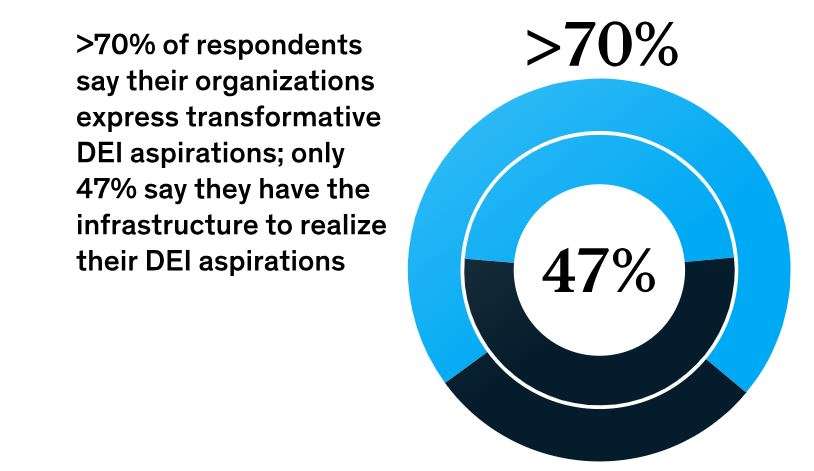Organizations today face ten significant shifts. Here’s what to do about them

Business leaders around the world are currently addressing not only economic volatility, geopolitical instability, and the lingering effects of the COVID-19 pandemic but also a range of organizational shifts that have significant implications for structures, processes, and people. The shifts include complex questions about how to organize for speed to shore up resilience, find the right balance between in-person and remote work models, address employees’ declining mental health, and build new institutional capabilities at a time of rapid technological change, among others.
To help CEOs and their leadership teams consider such questions, we have launched McKinsey’s The State of Organizations 2023 report. The report is an account of an ongoing research initiative that seeks both to pinpoint the most important shifts that organizations are grappling with and to provide some ideas and suggestions about how to approach them.
As part of the research, we conducted a survey of more than 2,500 business leaders around the world. Only half say their organizations are well prepared to anticipate and react to external shocks, and two-thirds see their organizations as overly complex and inefficient. We also spoke with business leaders to gather inspiring stories and best practices from beacons—organizations that have been able to adapt to recent economic and operational disruptions and forge new paths. Finally, we developed four points to consider in addressing the ten organizational shifts, leveraging the survey results, the quantitative research with executives, and insights from our work in the field and through existing McKinsey research.
The ten most significant shifts facing organizations today
Through the State of Organizations Survey, conversations with CEOs and their teams, and the findings of recent McKinsey research, we have identified ten of the most important organizational shifts that businesses need to address today. These shifts are both challenging and harbingers of opportunity, depending on how organizations address them.
1. Increasing speed, strengthening resilience.
Half the respondents in our survey say their organization is unprepared to react to future shocks. Those able to bounce forward—and quickly—out of serial crises may gain significant advantages over others.


2. True hybrid’: The new balance of in-person and remote work
Since the COVID-19 pandemic, about 90 percent of organizations have embraced a range of hybrid work models that allow employees to work from off-site locations for some or much of the time. It’s important that organizations provide structure and support around the activities best done in person or remotely.
3. Making way for applied AI.
AI is more than just a potential opportunity to boost a company’s operations; it can also be used to build better organizations. Companies are already using AI to create sustainable talent pipelines, drastically improve ways of working, and make faster, data-driven structural changes.


4. New rules of attraction, retention, and attrition.
People are revising their attitudes both to work and at work. Organizations can respond by tailoring employee value propositions to individualized preferences in ways that can help close the gap between what today’s workers want and what companies need.


5. Closing the capability chasm.
Companies often announce technological or digital elements in their strategies without having the right capabilities to integrate them. To achieve a competitive advantage, organizations need to build institutional capabilities—an integrated set of people, processes, and technology that enables them.


6. Walking the talent tightrope.
Business leaders have long walked a talent tightrope—carefully balancing budgets while retaining key people. In today’s uncertain economic climate, they need to focus more on matching top talent to the highest-value roles. McKinsey research shows that, in many organizations, between 20 and 30 percent of critical roles aren’t filled by the most appropriate people.
7. Leadership that is self-aware and inspiring.
Leaders today need to be able to lead themselves, lead a team of peers in the C-suite, and exhibit the leadership skills and mindset required to lead at scale, coordinating and inspiring networks of teams. To do that, they must build a keen awareness of both themselves and the operating environments around them.


8. Making meaningful progress on diversity, equity, and inclusion.
Many organizations are prioritizing diversity, equity, and inclusion (DEI), but in many cases, the initiatives aren’t translating into meaningful progress. To realize DEI aspirations, leaders will need to identify opportunities to make progress both in their organizations and in their communities and broader society.


9. Mental health: Investing in a portfolio of interventions.
About nine of ten organizations around the world offer some form of well-being program. But global health and well-being scores remain poor. Organizations need to refocus their efforts on systematically addressing the causes of mental-health and well-being challenges; one-off and incremental fixes won’t be enough.


10. Efficiency reloaded.
More than one-third of leaders in our survey list efficiency as a top three organizational priority. Boosting efficiency is about more than managing immediate crises or getting the same work done with fewer resources; it means more effectively deploying resources to where they matter the most.


Source: McKinsey & Company, GWFM Research










Responses